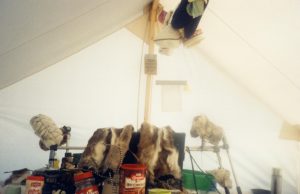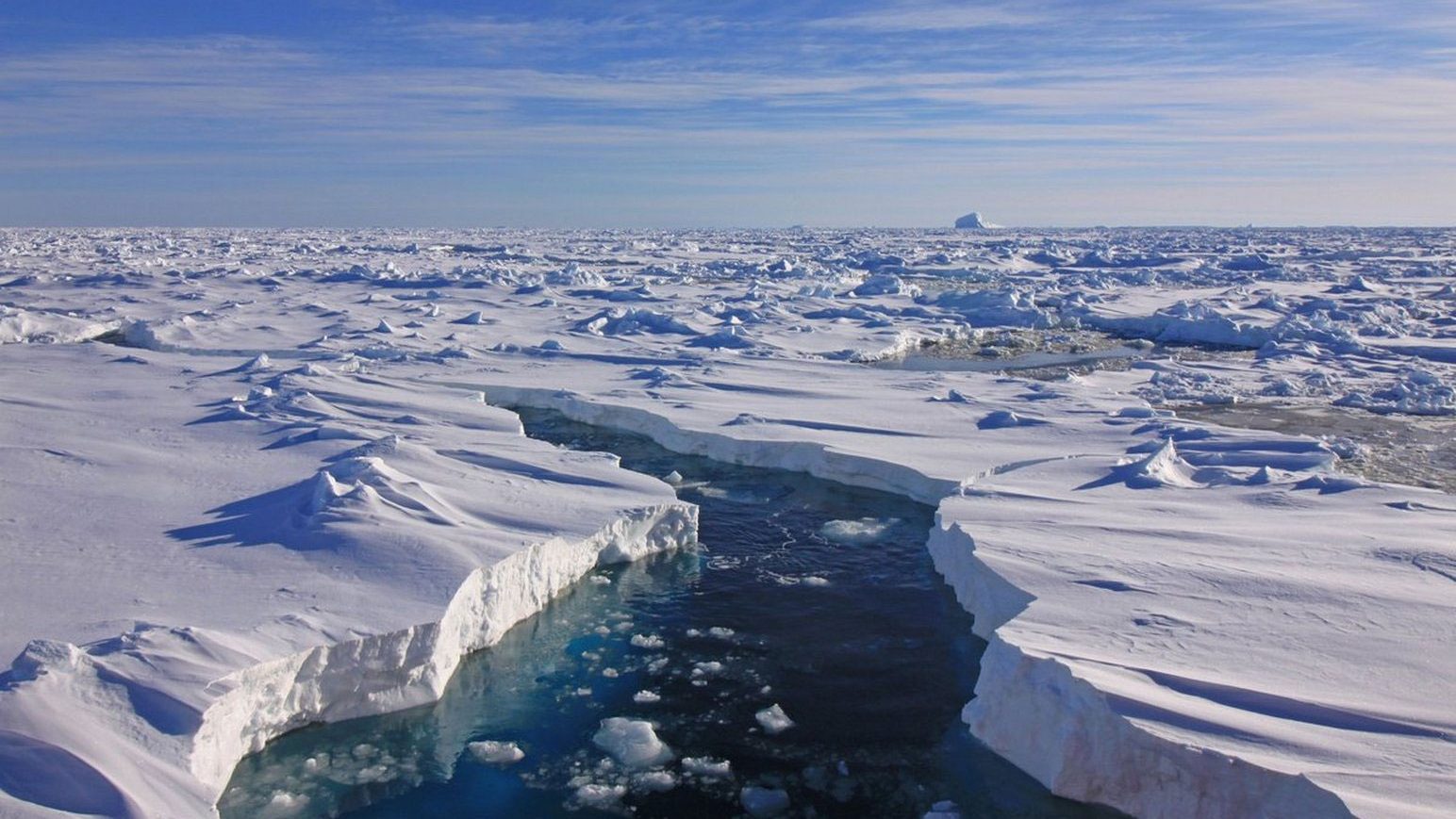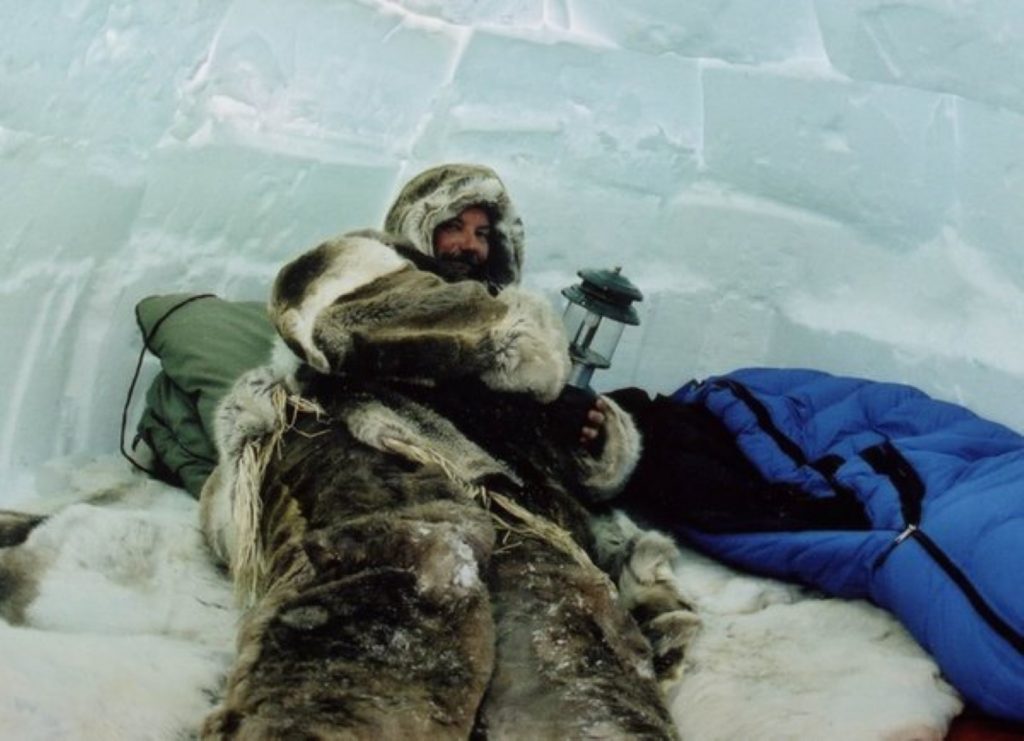Fans of David’s work will be thrilled to know he is currently working on a new book, tentatively titled “The Accidental Explorer”. Check back for updates. In the meantime here is a sneak peek.
Preface
(“Skull Islet” – Wilmot and Crampton Bay, 68°20’ N, 98° 47’W. May 2002)
No one likes to roll out of a warm sleeping bag at 5:30 in the morning. Especially after six hours of sleep, 645 km above the Arctic Circle. It is a continual fight between the mind that argues for action and the body that maintains, “you are warm and safe; stay here. It is painful out there.”
Sometimes another body part, usually the bladder, chimes in to break the tie. I usually found guilt about wasting time tipped the scales. It had taken much effort and expense to reach this amazing place, most of it provided by my teammates, and it was unthinkable to waste this opportunity.
As any parent can tell you, it is best to wrap any unwelcome activity in ritual – get up, brush your teeth, eat breakfast, pack your schoolbooks – each step in an invariant series leading inexorably and unconsciously to the next. Once the initial action is taken, whether to face the cold or get your child to school, the rest naturally follows.
So step one was to silence my watch alarm. At home, this was a simple task – press one button. But nothing in the Arctic is easy.
I lay entirely encased in my mummy bag, wrapped in three layers of clothing, my arms pinned to my sides. The watch nestled between layers two and three, and two different layers of hand covering, fingerless gloves and wool mittens hampered my digital dexterity. Move my arm across my chest, squeeze the right mitten in my left armpit, pull it off, then off with the left, uncover my watch, find the button, and press. Step one.
The following steps were each as difficult. Find the interior zipper of my sleeping bag and free my shoulders and arms – the rush of cold air into the bag and around my body was always a shock. Remove my sleeping mask, needed here in the land of the midnight sun, and bend back the lower half of my knit balaclava from my mouth, which crackled and resisted folding as my frozen condensed breath had given it the consistency of cardboard. Each time I did this, it cost me some beard hair. Dig into the sleeping bag to find my water bottle that, even with the aid of my body heat, was a half-frozen icy slush, and gulp a few sips into my parched mouth.
The next big step was getting out of the sleeping bag and getting dressed. Unfortunately, my fleece and windproof layers were too bulky to keep in the bag with me and were very cold and challenging to struggle into in the cramped confines of my low tent. In my struggle, I would try not to brush the hoarfrost from the tent interior, always without success, and it would invariably rain down and melt on my face and the back of my neck.
My last piece of clothing was my pair of insulated camp booties, their smooth soles slightly treacherous in the hard-packed snow outside. At least they were easy to don and kept my quickly-cooling feet nice and warm. My day boots were not an option at this point. Standing at the tent entrance, they had frozen solid, with laces encased in solid ice. The boots required the heat of a stove.
Upon my return the year before, I had been asked how cold it was inside my tent. My answer, “bloody cold,” was apparently too inexact, so I had brought a small thermometer with me this year. Unfortunately, the mercury had frozen solid on the first night, and the thermometer had burst. I would later learn this happens at approximately -40 degrees (Celcius or Fahrenheit, as the scales converge at -40), so all I could answer now was “colder than minus 40.” That, of course, was in still tent-interior air – outside in the ever-present wind chill, it was always much worse.
Once fully dressed, I would swing around to face the leeward entrance – inner zipper, outer zipper and wiggle out on my belly into the snow. It was always a bit of a mental shock to find that I was really here – emerging from one of a half-dozen sleeping tents ranged around larger cook and workshop tents, on a bare plain of the frozen ocean, beside a low gravel islet. We were 240km (150 miles) from the nearest town, a tiny warm outpost of seven people, our bright tents an insignificant speck of colour in an immense field of white.
I granted myself the minute to stretch and look around. I felt the wind on my quickly-freezing cheeks, looked for the approaching weather from the west, and again wondered at the pastel beauty of this desolate place. I felt the privilege of being able to do what I had always dreamed of, then shuffled off to the men’s latrine area over the crest of the islet to address any pressing biological needs.
Breakfast was at seven, and everyone else could get up whenever they wanted, on the understanding that we would start work at eight o’clock whether they had breakfasted or not. As the nominal “leader” of this motley crew of volunteers, I felt it was my duty to get things rolling so that the team could start their day with at least some comfort, so I was usually first out.
The next chore was to check the portable generator used to charge the magnetometer batteries and laptop computers, all stored overnight in insulated bags. We had two of these, a primary, practically-new one, kindly provided by the Polar Continental Shelf Project, and an intended backup – an ancient and much-repaired machine rented from one of our friends in Gjoa Haven. Of course, the newer one proved baulky, while the antique machine was highly reliable. Generally, one generator was left running all night to keep the electronics alive, but if it had run out of fuel or frozen, it would require a jolt to work, just like us. As anything requiring a pull start has always had a demonic animus towards me, this was often a prolonged and sweaty operation with much choke adjustment and inventive profanity.
Then it was off to the pristine snow bank that Saul had designated for drinking water. This was an unblemished bank of snow with the consistency of heavy Styrofoam, protected by a thin coating of smooth wind-compacted ice. Using a saw left there for the purpose, I cut out a slab of clean snow about the size of a large pizza box and carried it to the cook tent. There, using a bread knife, I divided it into pieces about the size of sticks of butter, placing them in a saucepan.
Our cook stove was fuelled by white gas and, of course, had a big sign warning “never operate inside a tent,” an injunction which everyone in the Arctic blissfully ignored. The gas had also frozen overnight into a semi-solid slurry that would need some heat source to render it usable. The only available heat source was me, so I placed the cold tank in the warmest place available, between my thighs, and waited. Eventually, the fuel would partially vaporize, and I would be able to pressurize the tank with the hand pump.
Now came the part I dreaded most. Since burning myself in a childhood accident, I had avoided open flame, matches and lighters of every sort as much as possible. Here, in a frozen tent, with a balky frozen liquid-fuel camp stove, there was no other option but to pull out the short wooden matches, turn the fuel valve to full, prime the cup and hope, usually vainly, to avoid a massive flare up. At least my frozen fingerless gloves provided some protection, and usually, within four or five matches, I had one burner emitting a faint blue flame.
The rest was relatively simple – melt the small pieces of snow in our saucepan, go out and fetch more snow two or three more times (snow is mostly air), pour the eventual water into the kettle and boil it, and enjoy the first (instant) coffee of the morning. Eventually, I would have a full kettle of water, and to save fuel would turn off the stove and let it refreeze, ready for the crew when they awoke. Pouring a little boiling water into the bottom of my coffee mug, I would thaw out my toothbrush and toothpaste and go outside to the designated “washing area” and brush my teeth. An alcohol-soaked “baby wipe” which had been defrosting inside my jacket would suffice to complete my morning ablutions, and, although it stung my raw snow- and windburned cheeks, the faint scent of lemon would invariably take my mind back a few years to when I changed the diapers on my wonderful young daughters. Turning to the southwest, I would imagine my family all still snugly asleep and facing a typical day of work and school and would blow each a kiss.
Chores done, I would have about an hour before the first wake-up calls for the other crewmembers. This solitary hour was the best part of my day. I marvelled at the unearthly silence as I walked up the gentle slope of our little islet, unlimbering my body and clearing my head. Occasionally I would disturb an arctic fox or hare, and the joyful feeling of being a warm sentient being in a frozen world of rock and ice would come over me. Unsurprisingly, the Inuit have a single word for this sense – “nuannaarpoq” – translated loosely as “taking extravagant pleasure in being alive.”
Standing on the crest of our small unnamed pile of gravel, I would look out on the ice to the southwest, towards O’Reilly Island, and then turn to the northeast, towards Grant Point. I was sure that the wreck of one of Sir John Franklin’s ships lay nearby under the mantle of frozen ocean. I was convinced it was almost certainly within sight, sleeping on the seabed. I tried to channel some psychic power to lead me to her, even while disbelieving in such things and confident that the discovery would be the result of hard work rather than supernatural help. I would have despaired if I knew it would take twelve more years to prove this hypothesis correct.
The scene was both desolate and beautiful, with the permanent low light casting blue and grey shadows behind the red-tinged sastrugi. There was no need for either a clock or a compass this close to the pole. At this time of year, the spring sun never set entirely as it made a complete circuit. At its highest point, barely a fist-height above the horizon, the sun indicated local noon (south), and at its lowest, barely scraping the horizon, was midnight (north). As I drank my second coffee and looked at the sun, I thought of the people of Iceland happily enjoying their lunch.
If time allowed, I would slip on my headphones for my morning hit of music – confident that the strains of the Pretenders or Beach Boys had never been heard in this frozen waste before. A quick unlimbering stroll around the islet would bring me back to camp and the row of tents containing my snoring teammates. As I waited for them in the communal tent, I would write up my journal, review the results from the day before, and check or modify the plans for the coming day.
Eventually, having all undergone similar trials, everyone would trickle into the tent and join me in a quick breakfast of instant oatmeal and another coffee. Then the work would begin again.


